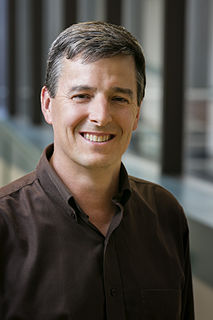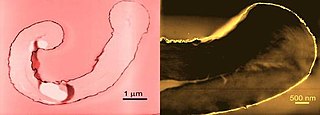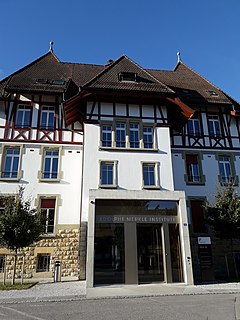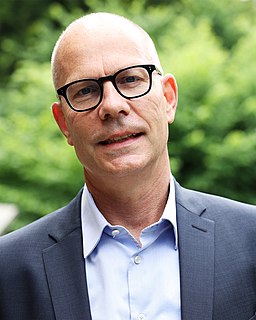
The interdisciplinary field of materials science covers the design and discovery of new materials, particularly solids. The field is also commonly termed materials science and engineering emphasizing engineering aspects of building useful items, and materials physics, which emphasizes the use of physics to describe material properties. The intellectual origins of materials science stem from the Age of Enlightenment, when researchers began to use analytical thinking from chemistry, physics, and engineering to understand ancient, phenomenological observations in metallurgy and mineralogy. Materials science still incorporates elements of physics, chemistry, and engineering. As such, the field was long considered by academic institutions as a sub-field of these related fields. Beginning in the 1940s, materials science began to be more widely recognized as a specific and distinct field of science and engineering, and major technical universities around the world created dedicated schools for its study.

The University of Fribourg is a public university located in Fribourg, Switzerland.

John A. Rogers is a physical chemist and a materials scientist. He is currently the Louis Simpson and Kimberly Querrey Professor of Materials Science and Engineering, Biomedical Engineering, and Neurological Surgery at Northwestern University.

Nanofabrics are textiles engineered with small particles that give ordinary materials advantageous properties such as superhydrophobicity, odor and moisture elimination, increased elasticity and strength, and bacterial resistance. Depending on the desired property, a nanofabric is either constructed from nanoscopic fibers called nanofibers, or is formed by applying a solution containing nanoparticles to a regular fabric. Nanofabrics research is an interdisciplinary effort involving bioengineering, molecular chemistry, physics, electrical engineering, computer science, and systems engineering. Applications of nanofabrics have the potential to revolutionize textile manufacturing and areas of medicine such as drug delivery and tissue engineering.

The Max Planck Institute for Polymer Research is a scientific center in the field of polymer science located in Mainz, Germany. The institute was founded in 1983 by Erhard W. Fischer and Gerhard Wegner. Belonging to the Chemistry, Physics and Technology Section, it is one of the 80 institutes in the Max Planck Society (Max-Planck-Gesellschaft).
The Max Planck Institute of Colloids and Interfaces is located in Potsdam-Golm Science Park in Golm, Potsdam, Germany. It was founded in 1990 as a successor of the Institute for Physical Chemistry and for Organic Chemistry, both in Berlin-Adlershof, and for Polymer Chemistry in Teltow. In 1999, it transferred to newly constructed extension facilities in Golm. It is one of 80 institutes in the Max Planck Society (Max-Planck-Gesellschaft).

The Center of Excellence (CoE) in Nanotechnology is located inside the Asian Institute of Technology campus. It is one among the eight centers of excellence in Thailand.
Frank Scheffold is the head of the Soft Matter and Photonics Group in the physics department at the University of Fribourg, Switzerland.
Nanocomposite hydrogels are nanomaterial-filled, hydrated, polymeric networks that exhibit higher elasticity and strength relative to traditionally made hydrogels. A range of natural and synthetic polymers are used to design nanocomposite network. By controlling the interactions between nanoparticles and polymer chains, a range of physical, chemical, and biological properties can be engineered. The combination of organic (polymer) and inorganic (clay) structure gives these hydrogels improved physical, chemical, electrical, biological, and swelling/de-swelling properties that cannot be achieved by either material alone. Inspired by flexible biological tissues, researchers incorporate carbon-based, polymeric, ceramic and/or metallic nanomaterials to give these hydrogels superior characteristics like optical properties and stimulus-sensitivity which can potentially be very helpful to medical and mechanical fields.

The Leibniz Institute of Polymer Research Dresden in Dresden – in short IPF Dresden – is a non-university research institute and a member of the Leibniz Association. The IPF is carrying out fundamental as well as application-oriented research in all areas of polymer science and investigates polymer materials with new or improved characteristics. In the material development, emphasis is given to nanotechnological aspects as well as to biosystem interfaces.

Irshad Hussain is a Pakistani Scientist in the field of chemistry and among the few pioneers to initiate nanomaterials research in Pakistan.

Yitzhak Mastai is a Chemistry Professor at Bar Ilan University specializing in chirality at the nanoscale and in nanotechnology.
Florian Müller-Plathe is a German theoretical chemist and professor for theoretical physical chemistry at Technische Universität Darmstadt.

Adolphe Merkle was a Swiss entrepreneur and patron of the sciences.

Vicki Leigh Colvin is a Professor of Engineering and Molecular Pharmacology at Brown University. She is the Director of the Centre for Biomedical Engineering. Her work focuses on the synthesis and characterisation of nanomaterials. She is a Fellow of the American Association for the Advancement of Science and the American Institute for Medical and Biological Engineering.
Emily A. Weiss is the Mark and Nancy Ratner Professor of Chemistry and Director of the Photo-Sciences Research Center at Northwestern University. Her research considers the optical and electronic properties of nanostructures, including hybrid organic–inorganic quantum dots. She was a two-time finalist in the Blavatnik Awards for Young Scientists.
Matthias Ballauff is a German chemist and physicist, and is a professor of physics at the Free University of Berlin. His postdoctoral research and training was directed by Paul Flory. He contributed to various areas of physical chemistry, in particular to polymer science, colloidal chemistry and nanomaterials, as well as to soft matter physics. Ballauff is particularly known for having developed new catalyst materials in the form of functionalized metallic nanoparticles dispersed in liquid phase, which can greatly speed up the reaction kinetics of organic molecules.

Raffaele Mezzenga is a soft condensed matter scientist, currently heading the Laboratory of Food and Soft Materials at the Swiss Federal Institute of Technology in Zurich.
Ramakrishna Podila is an Indian-born American physicist and nanomaterials researcher. He is currently an Associate Professor of Physics in the Department of Physics and Astronomy at Clemson University and is the director of the Clemson Nano-bio lab. He is known for his interdisciplinary research at the interface of physics, biology, and nanoscience. His lab integrates the principles of condensed matter physics, optical spectroscopy, and physiological chemistry to understand physics at the nanoscale and nano-bio interfaces.

Christoph Weder is the former Director of the Adolphe Merkle Institute (AMI) at the University of Fribourg, Switzerland, and a Professor of Polymer Chemistry and Materials. He is best known for his work on stimuli-responsive polymers, polymeric materials that change one or more of their properties when exposed to external cues. His research is focused on the development, investigation, and application of functional materials, in particular stimuli-responsive and bio-inspired polymers.















